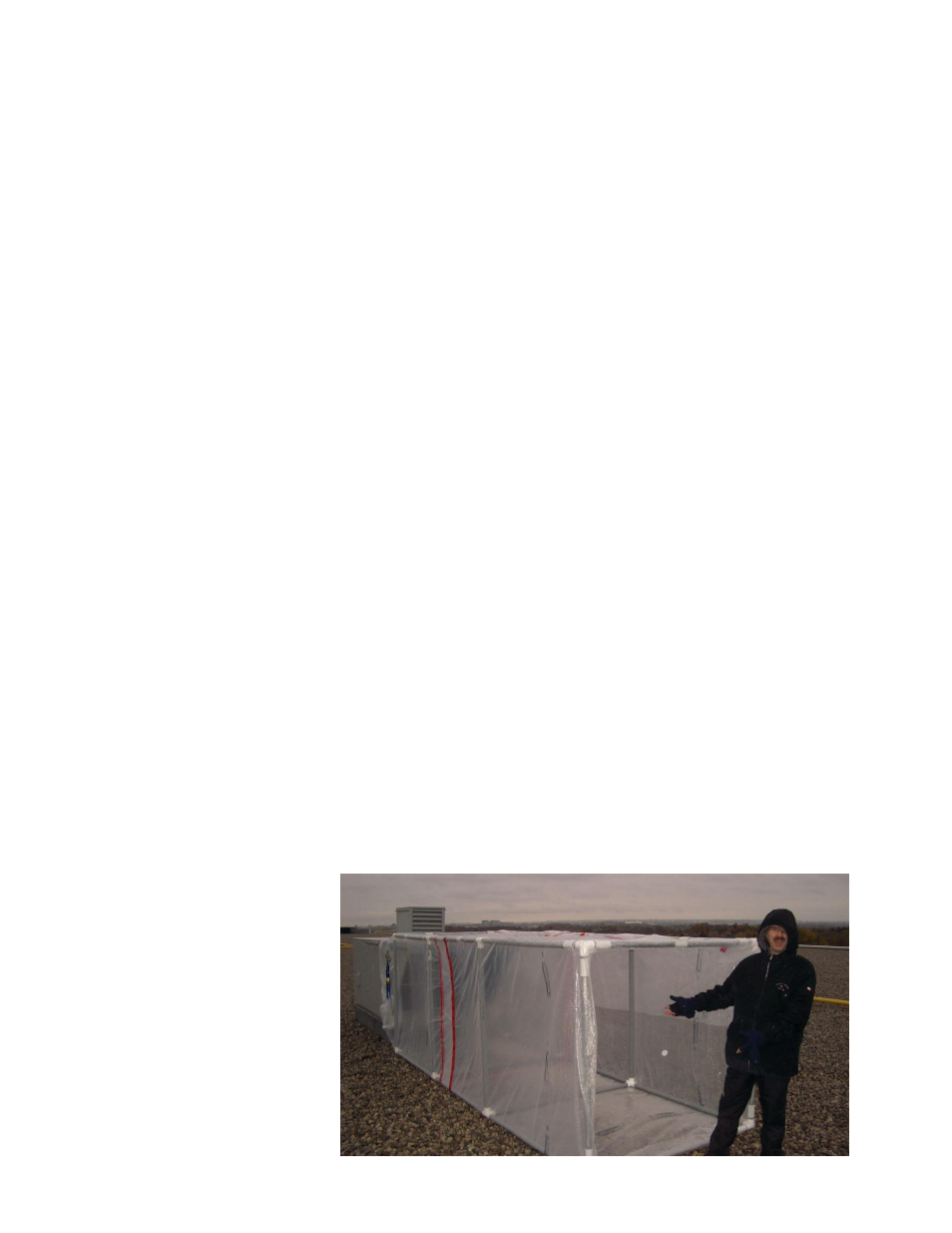Powered flow hood, Measure large exhaust and intake flow rates – Retrotec Residential Pressure & Air Leakage User Manual
Page 36

Page 36 of 75
©Retrotec Inc. 2014
4.6.2. Set pressure in front of return register to zero method – could be referred to
as a powered flow hood
Another possibly more convenient way to eliminate the insertion effect of the Device, would be to measure the
pressure at the flange or box that connects the flex to the wall register, then Set Pressure on the gauge to 0 so
the fan will speed up until there is no resistance to flow caused by the Device. You can then measure the flow
rate caused by the air handler through that register. Since the flow rate into the return will cause turbulence
and the presence of the attachment will change the air flow lines into the register, this method may not be as
accurate as the previous method.
If there are multiple registers, the flow through each register could be measure separately, then the sum of all
register could be used to determine total air handler flow.
Typically, once installed the pressure tap on the flange will yield a negative pressure that will be displayed on
Channel A. You would then Set Pressure to zero which would cause the fan to speed up and return the pressure
at the flange to zero which closely approximates the condition prior to the flange being installed over the return
register.
This method will NOT work when the Device is mounted to the airhandler cabinet since the pre-existing pressure
will already be a large negative value and setting this to zero would eliminate all the resistance of the return
ductwork and give a much larger flow rate than was actually present under normal operating conditions.
4.6.3. Measure large exhaust and intake flow rates
The previous methods can be utilized to measure large rooftop exhaust or air intake flow rates. The essential
idea behind the test method is to construct a tent over the source of the flow and to use a blower door to bring
the pressure inside the measurement tent to zero and in so doing to not affect the flow rate that was there
originally. There are two methods to do this:
1. Measure the pressure difference across the tent with at least two pressure hoses T’d together going to
the Blue port of the gauge and to connect the red port of the gauge to at least two pressure hoses T’d
together going to the Red port of the gauge. This works well in calm weather but when the wind is
blowing it will be difficult to determine zero pressure.
2. Measure the pressure difference between inside the duct referenced to indoors. This pressure signal can
be WiFi’d to the operator on the roof who can measure the flow rate into or out of the tent required to
re-establish the pressure in the duct prior to the installation of the tent.
Construction of the tent is from stock PRV pipe parts. They can be press fit together to create a framework and
covered in plastic using Red Tuck Tape to hold 3 mil Poly together. The blower door fan may rest on the ground
and be taped to the poly our
mounted in a panel that is taped
to the poly. Super tight fit is not
essential because the tent will be
very close to zero pressure during
the measurements.
Use the “Set Pressure” function on
the gauge to set the pressure to
zero for method 1 and to the duct
pressure in Method 2. Do NOT
use the “@” function for Method 1
Figure 14 Tent made of poly and PVC pipe courtesy of Terry Brennan of Camroden
Associates
